I'm trying to build my own Bench Power Supply but I'm having a hard time to find a good design (circuit/project) for it.
Here are my requirements:
- Input: main using a 18V 2A transformer
- Output: 0-18V
- Current: 0-1.5A
- Current Limiting controlled by a potentiometer
- Voltage output controlled by a potentiometer
- And I'd love it to be based on the LM317
I know there are some designs with two LM317, one limiting current and the other controlling the voltage output, but I couldn't find any good reference for those circuits.
